The Benjamin Franklin Parkway is officially being reimagined for its second century. The idea behind this 18-month planning process led by Design Workshop, an international landscape architecture, planning and urban design firm? Propose world-class, people-centric changes that would “dramatically improve” the Parkway’s “appeal, use, traffic safety, functionality, and beauty.”
An extensive survey, offered in ten languages, solicited information and opinions about uses and expectations focusing on the mile-long stretch between Logan Square and the steps of the Philadelphia Museum of Art. Everything is on the table, it seems: public space, public art, public transportation, signage, marathons, music festivals, water fountains, rest rooms, shade trees, traffic flow, and, of course, parking.
What does not seem to be on the table, at least in 2022, is anything like the display of military might displayed in the past. In April 1918, before demolition for the Parkway was complete, the first British tank demonstrated its destructive capabilities on the streets of Philadelphia. “At this time the parkway . . . was being cleared of buildings, and to show the wonderful work of the tank it was run over ditches, hills and rubble, and ended up with battering down a 2-foot brick wall of the house that was being demolished.”
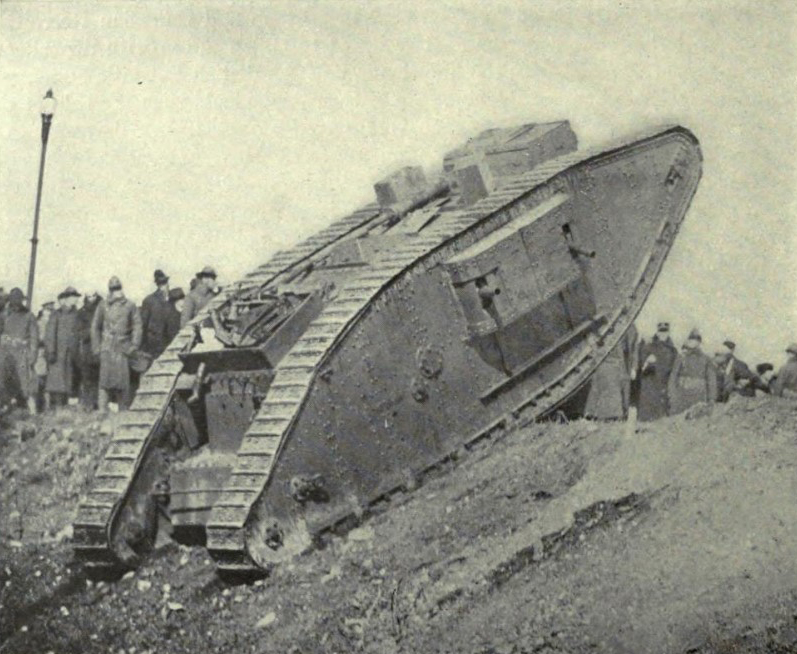
Skip ahead about a half-century and we’re looking at Cold War displays of America’s evolving military prowess. In 1960, Mayor Richardson Dilworth proclaimed “engineer week” and urged those in the trenches to embrace to the time’s greatest challenge. “This is the decade of space exploration and new frontiers in transportation, electronics, chemistry, automation and nucleonics,” reported the Inquirer, which pointed to “special exhibits of engineering achievements” on view at Reyburn Plaza, across from City Hall. This included a tank or two, General Electric’s new space nose cone, a Navy missile, and the Piaseceki “Flying Jeep.”
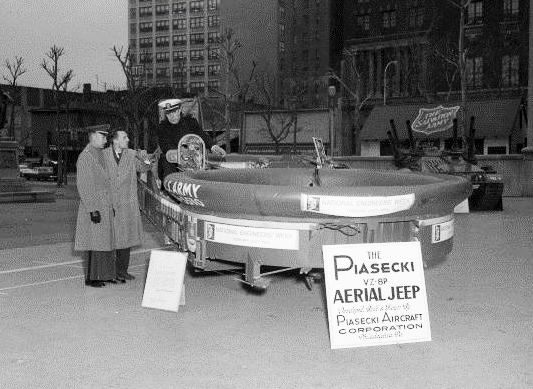
There was particular pride in the latter, which had origins in nearby Essington, Pennsylvania. The U.S. Army Transportation Research Command had started experimenting with flying jeeps in 1956. With Chrysler and Curtiss-Wright, Piasecki won contracts for working prototypes. The Piasecki AirGeep was first flown, unsuccessfully, in October 1958. It “proved grossly underpowered, barely able to fly over a fence, and it was sent back to the shop.” An upgraded AirGeep flew in June 1959, and, over the next several years, was further improved for the Army and, with floats and the name of “SeaGeep,” for the Navy.
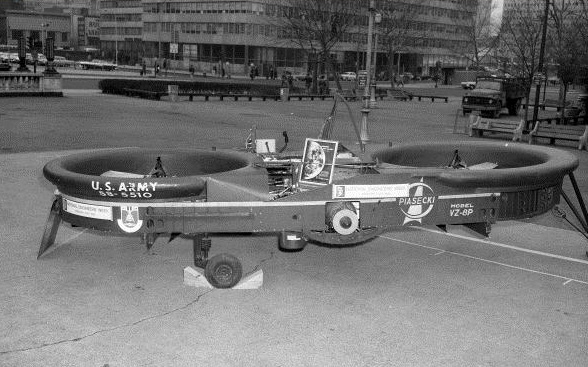
Actually, the public’s romance with the Flying Jeep had started in the 1940s when Consolidated Vultee Aircraft Corporation of Southern California promoted its version of vertical flight, a vehicle that could “take off and land almost ‘on a dime.’” The Vultee Flying Jeep could “serve as the ‘eyes upstairs’ for artillery units… for laying signal corps wire over jungle and impassable terrain…and for photo reconnaissance work.” It was also deployed as a “flying ambulance to evacuate casualties from small jungle clearings and inaccessible battle zones.” The company boasted that “many a wounded American boy is alive and well because this tiny Consolidated Vultee plane speeded him to the base hospital in minutes, instead of the hours it would have taken stretcher bearers to make the arduous trip.”
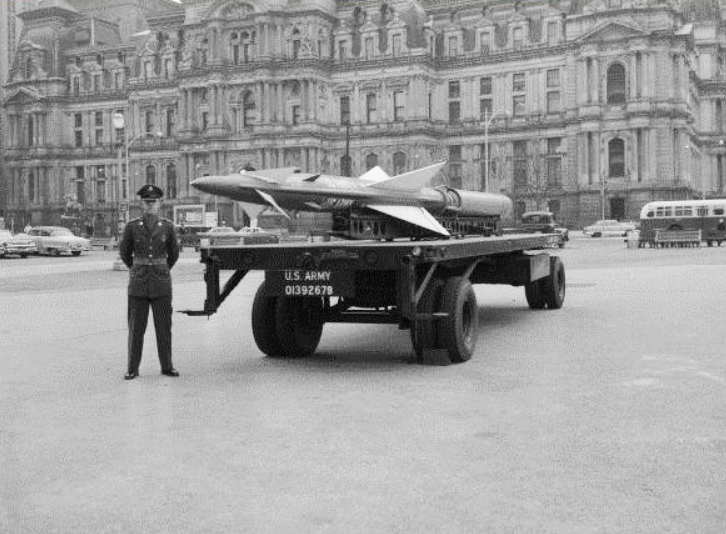
There were even plans for civilian uses. “Your postwar Flying Jeep may not look exactly like this, the company suggested. “But you can be certain it will be safe, easy to fly, and an economical family plane. Well suited, too, for vacations, inter-city travel, for aero clubs and ‘Fly-it-Yourself” stations … for farmers sowing and dusting crops…for forest patrol and fire spotting . . . for policing and traffic control . . . an idea all-purpose plane.”
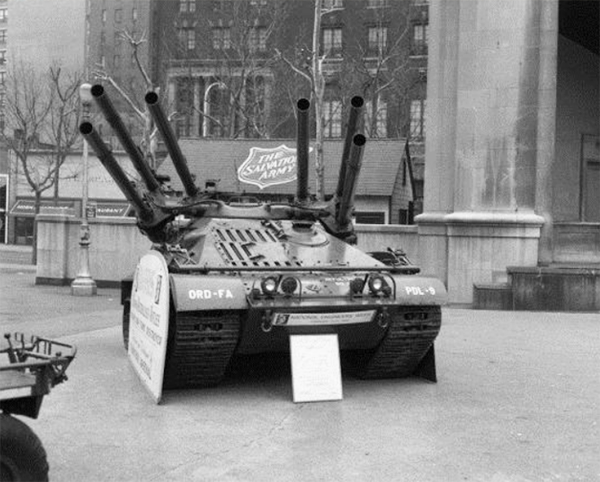
Richard Tregaskis, the war correspondent known for his book and the movie “Guadalcanal Diary,” wrote another “war thriller” titled “The Flying Jeeps.” Columbia Pictures bought it in 1950, although the project never took off. Still, the idea of low-altitude, personal flying had grabbed the public imagination and was not about to let go.
The Army’s imagination, on the other hand, was less robust. Experimental flights and redesigns continued until the Army deemed the Flying Jeep “unsuitable for the modern battlefield, and concentrated on the development of conventional helicopters.”
[Sources: Philadelphia in the World War, 1914-1919, by Philadelphia. War History Committee (Philadelphia: 1922); “35 Groups Mark Engineer Week,” The Philadelphia Inquirer February 22, 1960; “Hollywood,” The Philadelphia Inquirer, August 25, 1950; [Advertisement] The Consolidated Vultee Aircraft Corporation; The Philadelphia Inquirer February 1, 1945; Piasecki VZ-8 Airgeep, YouTube.]

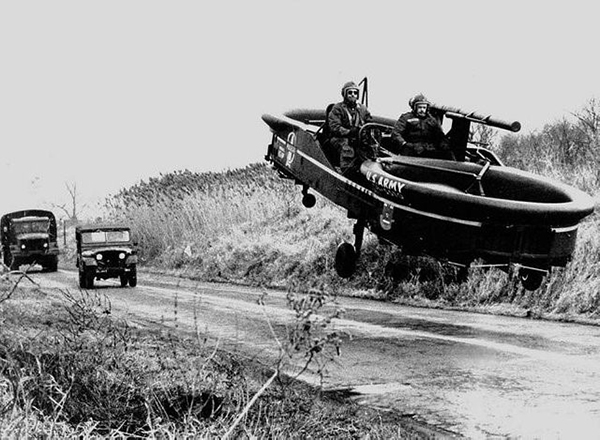
One reply on “Trundling Tanks and Flying Jeeps on the Parkway”
Definitely not a sidewinder missile. Looks like a Nike missile for air defense.